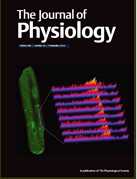J Physiol:开发出治疗胃肠道疾病的神经递质靶向疗法
2013-05-06 T.Shen 生物谷
2012年12月5日 讯 /生物谷BIOON/ --近日,刊登在国际杂志The Journal of Physiology上的一篇研究报告中,来自宾旦法尼亚州立小学医学院的研究者揭示了,选择性地靶向神经递质可以控制胰腺功能,最终或可成为胃肠道疾病的新型疗法, 如糖尿病、消化不良以及胃食管反流等疾病。 胰腺存在两个功能部分,一个是释放消化酶类,一个是释放激素类,如胰岛素和胰高血糖素。起源于大脑的迷
2012年12月5日 讯 /生物谷BIOON/ --近日,刊登在国际杂志The Journal of Physiology上的一篇研究报告中,来自宾旦法尼亚州立小学医学院的研究者揭示了,选择性地靶向神经递质可以控制胰腺功能,最终或可成为胃肠道疾病的新型疗法, 如糖尿病、消化不良以及胃食管反流等疾病。
胰腺存在两个功能部分,一个是释放消化酶类,一个是释放激素类,如胰岛素和胰高血糖素。起源于大脑的迷走神经可以调节胰腺这两个功能区域,当神经检测到发生在胃肠道的化学信号或者生物信号的改变,其就会解析并结合这些信号,来对机体器官产生反馈效应。
大脑和器官中的神经递质可以控制神经网络来接收信号,神经递质是由神经所释放的化学信号物,其它的神经递质,如谷氨酸盐,其可以扮演特殊的受体蛋白存在于神经细胞中。谷氨酸盐可以扮演集中不同类别的受体蛋白质,一种主要是亲代谢性谷氨酸盐受体(mGluRs),这一类别可以被分为三个亚群,I、II、III,其依赖于神经细胞的功能和其所处位置而定。
研究者开展这项研究的目的在于调查mGluRs如何在神经突触部位被进行组织的,神经突触是一种特殊结构,其可以允许信号从一个神经细胞传输到另一个神经细胞,第二个目的在于研究是否胰岛素和酶类的分泌是由不同类别的迷走神经运动神经元所完成。
II和III型mGluRs存在于神经突触中,其可以激活或者抑制迷走神经的神经细胞,来向胰腺发送信号,依赖于不同的mGluRs谷氨酸盐产生不同的结果。当谷氨酸盐扮演II类或者III类mGluRs时,胰岛素分泌就会降低,当II类mGluR被谷氨酸盐激活后,才会导致胰腺酶类分泌增加。
研究揭示了,脑干迷走神经回路的mGluRs可以调节胰腺的功能,同时也可以被以一种特殊的方式来组织。这种方式的组织或可帮助研究者开发出选择性的药物来靶向定位特殊的迷走神经回路,来应对患者胃肠的逆流疾病、胃肌轻瘫等疾病。相关研究由国立卫生研究院等机构提供资助。
与胃肠道相关的拓展阅读:

Pancreatic insulin and exocrine secretion are under the modulatory control of distinct subpopulations of vagal motoneurones in the rat.
Abstract
Brainstem vago-vagal neurocircuits modulate upper gastrointestinal functions. Derangement of these sensory-motor circuits is implicated in several pathophysiological states, such as gastroesophageal reflux disease (GERD), functional dyspepsia and, possibly, pancreatitis. While vagal circuits controlling the stomach have received more attention, the organization of brainstem pancreatic neurocircuits is still largely unknown. We aimed to investigate the in vitro and in vivo modulation of brainstem vagal circuits controlling pancreatic secretion. Using patch clamp techniques on identified vagal pancreas-projecting neurones, we studied the effects of metabotropic glutamate receptor (mGluR) agents in relation to the effects of exendin-4, a glucagon-like peptide 1 analogue, cholecystokinin (CCK) and pancreatic polypeptide (PP). An in vivo anaesthetized rat preparation was used to measure pancreatic exocrine secretion (PES) and plasma insulin following microinjection of metabotropic glutamate receptor (mGluR) agonists and exendin-4 in the brainstem. Group II and III mGluR agonists (2R,4R-4-aminopyrrolidine-2,4-dicarboxylate (APDC) and L(+)-2-amino-4-phosphonobutyric acid (L-AP4), respectively) decreased the frequency of miniature inhibitory and excitatory postsynaptic currents (mIPSCs and mEPSCs, respectively) in the majority of the neurones tested. All neurones responsive to L-AP4 were also responsive to APDC, but not vice versa. Further, in neurones where L-AP4 decreased mIPSC frequency, exendin-4 increased, while PP had no effect upon, mIPSC frequency. Brainstem microinjection of APDC or L-AP4 decreased plasma insulin secretion, whereas only APDC microinjections increased PES. Exendin-4 microinjections increased plasma insulin. Our results indicate a discrete organization of vagal circuits, which opens up promising avenues of research aimed at investigating the physiology of homeostatic autonomic neurocircuits.
本网站所有内容来源注明为“梅斯医学”或“MedSci原创”的文字、图片和音视频资料,版权均属于梅斯医学所有。非经授权,任何媒体、网站或个人不得转载,授权转载时须注明来源为“梅斯医学”。其它来源的文章系转载文章,或“梅斯号”自媒体发布的文章,仅系出于传递更多信息之目的,本站仅负责审核内容合规,其内容不代表本站立场,本站不负责内容的准确性和版权。如果存在侵权、或不希望被转载的媒体或个人可与我们联系,我们将立即进行删除处理。
在此留言








#胃肠道疾病#
81
#Physio#
58
#胃肠道#
64
#靶向疗法#
75
#神经递质#
87
#肠道疾病#
98